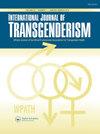Comparing implicit and explicit attitudes of gay, straight, and non-monosexual groups toward transmen and transwomen
Q1 Social Sciences
引用次数: 13
Abstract
ABSTRACT Background: Transphobia studies have typically relied on self-report measures from heterosexual samples. However, there is evidence suggesting the need to use indirect measures and to explore transphobia among other populations. Aims: This study examined how explicit and implicit attitudes toward transwomen and transmen differ between people of different sexual orientations. Methods: Cisgender participants (N = 265) completed measures of explicit feelings toward transmen and transwomen, as well as Implicit Association Tests (IAT) for each group. Comparisons were made between 54 gay, 79 straight, and 132 non-monosexual (asexual, bisexual, pansexual) individuals. Results: An interaction was found between measurement type (explicit, implicit) and sexual orientation (straight, gay, non-monosexual). With regard to transmen, gay respondents’ explicit and implicit scores diverged such that they explicitly reported lower bias than their straight counterparts, but their Transmen-IAT showed an implicit preference for biological men over transmen. For attitudes toward transwomen, implicit measurement scores were consistently negative and did not differ by group. Gay participants also reported positive explicit attitudes toward transwomen, similar to non-monosexual people. Discussion: Overall, findings show that gay people tend to report positive attitudes toward transgender people explicitly, but tend to have implicit bias against both transmen and transwomen. Future studies need to explore the origins of these biases and how they relate to the complex interplay of sex, gender, and sexual orientation.比较同性恋、异性恋和非单性恋群体对跨性别者和跨性别者的显性和隐性态度
背景:变性恐惧症研究通常依赖于异性恋样本的自我报告测量。然而,有证据表明有必要使用间接措施,并在其他人群中探索跨性别恐惧症。目的:本研究探讨不同性取向人群对跨性别者和跨性别者外显和内隐态度的差异。方法:顺性别参与者(N = 265)完成了对跨性别者和跨性别者的外显感受测量,以及每组内隐联想测试(IAT)。对54名同性恋、79名异性恋和132名非单性恋(无性恋、双性恋、泛性恋)个体进行了比较。结果:测量类型(外显、内隐)与性取向(异性恋、同性恋、非单性)之间存在交互作用。关于跨性别者,同性恋者的外显和内隐得分出现了分歧,他们明确报告的偏见低于异性恋者,但他们的跨性别- iat显示出对生理男性的内隐偏好高于跨性别者。对于对跨性别女性的态度,内隐测量得分始终为负,且各组之间没有差异。同性恋参与者也报告了对跨性别女性的积极明确态度,这与非单性恋者相似。讨论:总的来说,研究结果表明,同性恋者倾向于明确地对变性人持积极态度,但倾向于对变性人和变性人都有隐性偏见。未来的研究需要探索这些偏见的起源,以及它们如何与性、性别和性取向的复杂相互作用联系起来。
本文章由计算机程序翻译,如有差异,请以英文原文为准。
求助全文
约1分钟内获得全文
求助全文
来源期刊

International Journal of Transgenderism
Social Sciences-Gender Studies
CiteScore
5.10
自引率
0.00%
发文量
0
期刊介绍:
International Journal of Transgenderism, together with its partner organization the World Professional Association for Transgender Health (WPATH), offers an international, multidisciplinary scholarly forum for publication in the field of transgender health in its broadest sense for academics, practitioners, policy makers, and the general population.
The journal welcomes contributions from a range of disciplines, such as:
Endocrinology
Surgery
Obstetrics and Gynaecology
Psychiatry
Psychology
Speech and language therapy
Sexual medicine
Sexology
Family therapy
Public health
Sociology
Counselling
Law
Medical ethics.
 求助内容:
求助内容: 应助结果提醒方式:
应助结果提醒方式:


